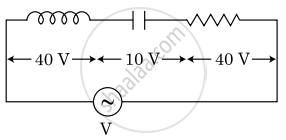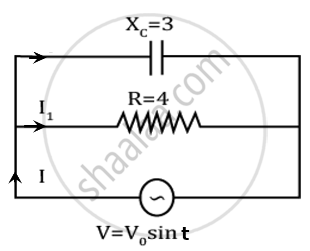Advertisements
Advertisements
प्रश्न
How will you define Q-factor?
उत्तर
- Q factor is defined as the ratio of voltage across L or C to the applied voltage.
- Q – factor = `"Voltage across L or C"/"Applied Voltage"`
- Q factor = `1/"R" sqrt("L"/"C")`
APPEARS IN
संबंधित प्रश्न
Why is choke coil needed in the use of fluorescent tubes with ac mains?
In a series RL circuit, the resistance and inductive reactance are the same. Then the phase difference between the voltage and current in the circuit is
A choke coil in series with a lamp is connected to a dc line. The lamp is seen to shine brightly. Insertion of an iron core in the choke causes no change in the lamp’s brightness. Predict the corresponding observations if the connection is to an ac line.
In an alternating current circuit consisting of elements in series, the current increases on increasing the frequency of supply. Which of the following elements are likely to constitute the circuit?
Which of the following is independent of the frequency of a.c?
An inductor of inductance L, a capacitor of capacitance C and a resistor of resistance ‘R’ are connected in series to an ac source of potential difference ‘V’ volts as shown in figure. Potential difference across L, C and R is 40 V, 10 V and 40 V, respectively. The amplitude of current flowing through LCR series circuit is `10sqrt2` A. The impedance of the circuit is :

A capacitor and resistor are connected with an AC source as shown in figure. Reactance of capacitor is XC = 3 Ω and resistance of resistor is 4 Ω. Phase difference between current I and I1 is approx ______.

An alternating current I = 14 sin (100 πt) A passes through a series combination of a resistor of 30 Ω and an inductor of `(2/(5pi))` H. Taking `sqrt2` = 1.4 calculate the rms value of the voltage drops across the resistor and the inductor.
